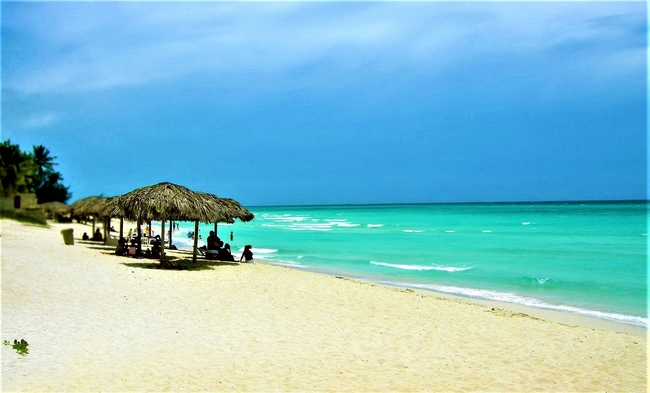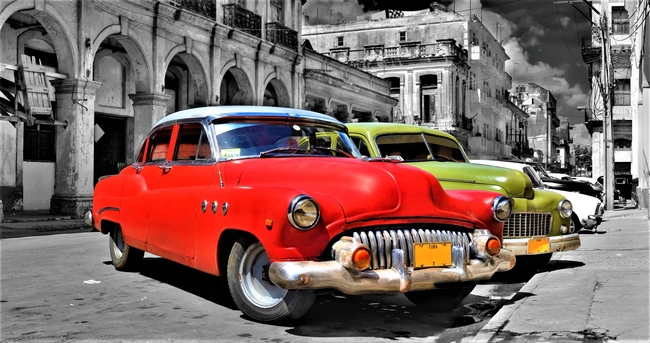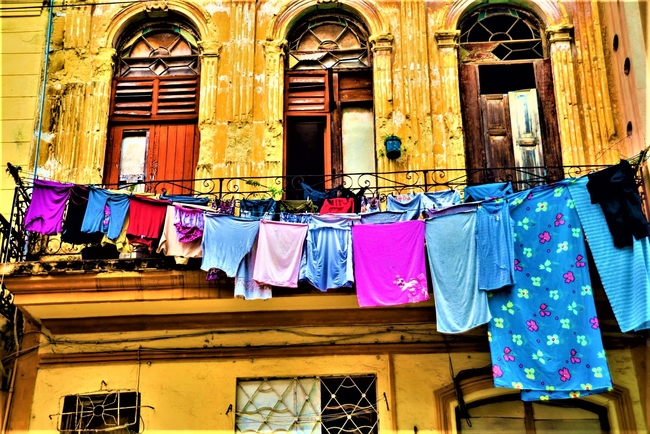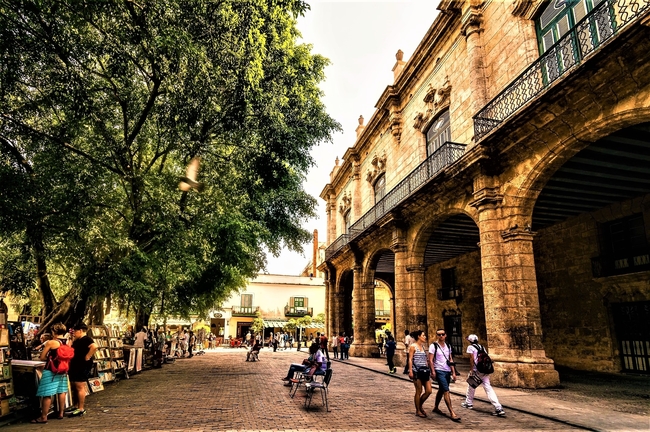

Lying on a white sand beach at the edge of the turquoise sea in Cuba, I could have been at any Caribbean destination. The major difference was that I was enjoying an experience that not all Americans can share.
Restrictions on travel to Cuba were imposed in 1963, after Fidel Castro led a revolution that had overthrown the government and installed a socialist state under Communist rule. President Obama loosened those regulations in an effort to achieve more normal relations between the two nations, but the Trump administration tightened them again.
Despite the new rules, which ended group people-to-people travel, it’s still possible to experience the many appeals of that Caribbean island, which lies about 90 miles south of Key West, Florida.
The Office of Foreign Assets Control of the U.S. Department of Treasury, which controls travel to Cuba, lists 12 categories of trips that qualify. These include support for the Cuban people, humanitarian projects, and religious or educational activities.
People who visit Cuba under these or other authorized purposes must spend their time fully engaged in the category of travel they choose. Touristic travel, such as tanning on the country’s sugary sand beaches, is illegal.
Cuba is a Country of Contradictions
Those who go to Cuba under the new regulations will find a country of contradictions that make it an intriguing and inviting place to explore. The streets of Old Havana (Habana Vieja), the original 16th-century walled city, are lined by a treasure-trove of architectural gems.
Mountain ranges rise dramatically from verdant valleys and fields of sugar cane. Almost everyone I met welcomed visitors with a warm smile on their lips, music in their souls, and a mix of both resignation and humor about the challenges of their lives.
Vintage American-made cars from the 1950s, a prized possession for those who can afford them, add to the dichotomy. Some have been lovingly restored by well-to-do owners who have the resources to do so. Others are junkers kept running by a combination of mechanical innovation, imagination and luck.

In recent years, renovations to what once were stately private homes in Havana – many of which now house several families — have been underway, especially in areas where tourists congregate.

Given the backlog of structures that have deteriorated, however, there still are countless buildings whose former glory is hidden beneath crumbling facades and flaking paint.

The Many Appeals of Havana, Cuba
Behind its faded beauty, Havana has attractions enough to fill many an interesting day. Several dozen major museums make the city an art lover’s paradise. A number of them offer the unsubtle propaganda, and praise for socialism and the Revolution, that visitors to Cuba soon learn to expect. Others would rank as world class wherever they were located, displaying works of art by the likes of Renoir, Rodin and Picasso.
The aptly named Museum of the Revolution, housed in the former Presidential Palace, focuses upon the uprising (1953-1959) that led to the downfall of the dictatorial ruler Fulgencio Batista and the rise to power of Fidel Castro. Maps, weapons and other exhibits — many with English descriptions denouncing U.S. oppression, imperialism and capitalism – trace the Revolution in detail. An outdoor display area includes the tiny yacht in which Castro and 81 other men landed in Cuba to begin their improbable, and ultimately successful, revolution.
When I sought to exchange the confined space of museums to the world outside, I found the streets and neighborhoods of Havana to offer an introduction to living history. The Plaza de Armas, the most important square, was laid out in 1519, and served as the center around which early Havana arose.

The Malecon, a sweeping boulevard between the city and the sea, is frequented by strollers, fishermen and lovers strolling hand-in-hand. The stately old villas of sugar barons and other wealthy Cubans who once resided in the upscale Miramar neighborhood, which were abandoned following the Revolution, now house government agencies, foreign embassies and business offices.

Cuba’s Countryside and Towns Offer Beauty and Diversity
To gain a more complete understanding of Cuba, I also explored other areas of the island. Fields of sugar cane and what many cigar aficionados rate as the world’s best tobacco yield to rolling plains where cattle graze. Cowboys (vaqueros) riding horses, and farmers guiding plows pulled by oxen, come into view. Low hills where coffee is grown rise into mountain ranges.
The northern coastline is rimmed by the best beaches on the island. The resort complex at Varadero, a two-hour drive east of Havana, has long attracted vacationers from Europe and Canada who have been free to visit Cuba without restrictions.
Explorations elsewhere on the island provide a wealth of experiences and impressions. Strolling the narrow, cobblestone streets of Trinidad, which was founded in 1514, is to be immersed in a time capsule of Cuba’s colonial past. Santiago de Cuba, the second largest city, is perched in hills overlooking the southeastern coast. Its past includes serving as the capital city during the mid-16th century, a slave port and a refuge for French settlers from Haiti.
In the little village of El Cobre, just outside Santiago, even the most ramshackle houses are neat, tidy and often decorated by foliage and flowers. Many of the people I encountered there, and elsewhere in Cuba, looked at me with curiosity, then smiled and greeted me in Spanish.
One man gestured for me to enter his modest home, where he offered me coffee and introduced me to his family. After glancing around to make certain no one was observing us, he rolled up the sleeve of his T-shirt to display an American flag tattoo on his upper arm.
New Limited Freedoms are Taking Hold in Cuba
The positive attitude that tattoo represented is held by many Cubans. In recent years, they have been getting a small taste of economic freedoms that we enjoy in the United States, at least in a limited way.
Some unpopular policies imposed by Fidel Castro during the decades during which he ruled in Cuba have been eased by his successors. These include the restriction which prevented people from buying and selling property and automobiles. Limited private enterprise now is accepted, and new small businesses have sprung up, including restaurants and people who sell pizza through the windows of their homes.
Those who visit Cuba have opportunities to observe these changes. They also will experience the friendliness of people whose lives long have been challenging and lacking in luxuries, and sometimes necessities.
The positive attitude many have managed to retain is one of my lasting memories, along with the confusing, often conflicting, impressions left by that country. Those recollections linger, along with images of Cuba’s natural beauty, glorious if often faded architecture and other attractions.
For detailed information about the regulations governing travel to Cuba, log onto the Office of Foreign Assets Control at www.treasury.gov/ofac
Authors: Fyllis Hockman and Victor Block are a husband-wife team of experienced travel journalists who have gallivanted throughout the United States, and to nearly 80 countries around the world, and written about what they have seen, done and learned. Their articles have appeared in newspapers across the country and on websites across the Internet, and they each have won numerous writing awards. They love to explore new destinations and cultures and uncover off-the-beaten-path attractions. Read more of their work at The Rambling Writers
- Broward County, Florida: When the Winter Sun Hides Behind a Cloud - April 16, 2024
- Nature is Neat in Broward County, Florida - April 1, 2024
- Margaritaville: A Time-Honored Memorial to Jimmy Buffett - March 15, 2024
